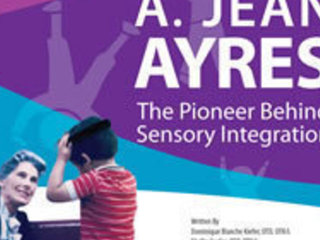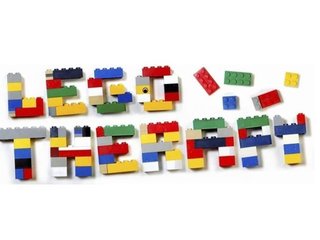Paediatric Occupational Therapists (OT’s) help your child to develop his, or her, full potential. ( meet our Occupational Therapists in London )
Occupational Therapists can help your child learn and master the “job” of day to day living - to have confidence to make choices and decisions and then try new challenges for themselves.
It is easy to take for granted the ease with which children acquire skills and develop. Not until a child’s ability to learn or move is challenged by a disability, co-ordination problem or a learning difficulty do we realise how quickly a child’s development can be interrupted, delayed or stopped.
OT’s are primarily concerned with the impact of a movement or learning difficulty, self care, self-help skills, play, leisure and school life. These are the practical challenges of day to day life encountered at home and at school.
OT’s see children with a wide range of difficulties that include dressing, eating, difficulties using scissors, pens, pencils and paper, tying shoe laces, handling toys and playing with friends.
Specific conditions include Developmental Co-ordination Disorders (eg. Dyspraxia), neurological and orthopaedic conditions, learning difficulties, visual perceptual and visual motor-integration problems, degenerative disorders and genetic or chromosomal disorders.

Sensory Integration
The term sensory integration was coined by Dr A. Jean Ayres, PhD, OTR, a Californian occupational therapist and neuroscientist. As an Occupational Therapist Dr. Ayres studied how the ability to process our senses and our motor planning skills impacted with our activities of daily living and our ability to learn. Since Dr Ayres ground breaking work in the 1960′s the theory of sensory integration has developed and refined by leading researchers in the fields of Occupational Therapy, Occupational Science, neuro psychology, neurology and child development.
Sensory Integration is a treatment approach that requires post graduate specialist training. It has long being associated with Occupational Therapy however many different professionals are also trained in this specific treatment approach. Sensory integration treats individuals who present with “sensory processing difficulties” (SPD) or “sensory integration dysfunction” (SID) . A person with SPD /SID finds it difficult to process and act upon information received through the senses, which creates challenges in performing countless everyday tasks. Motor clumsiness, behavioral problems, anxiety, depression, school failure, and other impacts may result if the disorder is not treated effectively. Current research indicates that at least one in twenty people in the general population may be affected by SPD (from Sensational Kids: Hope and Help for Children With Sensory Processing Disorder p. 249-250 by Lucy Jane Miller, PhD, OTR).
Some useful links
www.spdstar.org/research-library
www.huffingtonpost.com/2012/05/10/children-sensory-issues_n_1506341.html

LEGO® therapy was developed 15 years ago by Daniel B. LeGoff, a clinical Neuropsychologist, who noticed an improvement in social interactions in children with Autism and Neurodevelopmental disorders when engaging with LEGO® in a therapeutic and structured manner. LEGO® therapy has been proved as a highly effective tool in the development of appropriate social interactions in children with diagnoses of Autism Spectrum Disorder (ASD), Asperger’s Syndrome, Anxiety, Depression and Adjustment Disorders.
LEGO® therapy is a group-based therapy programme targeted at children between the ages of 5 and 17 years. Each child is assigned a specific, clearly defined task which contributes to the overall success of the groups activity/end product by encouraging active problem solving, social interaction and team work to ensure success.
In each group there are 3 roles, namely the architect, the supplier and the builder – each child is encouraged to stick to their role within the session, but roles are rotated between sessions. The architect holds the instructions as to what bricks are needed for the supplier and how to assemble the end product for the builder. The supplier provides the correct bricks to the builder who then assembles the structure. Effective communication, social confidence, problem solving, and teamwork is actively facilitated in each group session to ensure an accurate and successful end product. Each group is facilitated by a trained adult who uses gentle prompting to ensure the targets for each session are met.
Research studies have found LEGO® therapy to be an effective means of developing “verbal and non-verbal communication, joint attention and task focus, collaborative problem-solving, sharing and turn-taking” (LeGoff and Sherman, 2006).
A study conducted in 2008 showed that children who participated in LEGO® therapy showed a significant improvement in learning, general social skills and behaviour modifications in comparison to a control group who did not receive the specialised LEGO® therapy (Owens, Granader, and Humphrey).
Occupational Therapists are advocates for play and the benefits it has on a child’s performance in other occupational areas, like scholastic performance, social skills and self-esteem. LEGO® therapy provides a wide range of therapeutic benefits, namely fine motor skills and finger strengthening, motor planning and visual perceptual skills, social skills and creative play and, most importantly, self-esteem and self-confidence.
Here at KCC both Occupational Therapists and Speech and Language Therapists incorporate Lego therapy in their treatments. Lego Therapy forms part of the Social Skills grounds ( SSG) we offer here at clinic and the children are loving it!
TLP is a music based therapy that helps children tune into and respond to the world.
TLP has an impact on brain and basic physiological functions.
High quality music is recorded specifically for therapeutic listening. The music is remastered (altered) to exaggerate the parts of sound that naturally capture attention. TLP stimulates the part of the brain involved with regulating bodily functions, relating to others and organising behaviour. Therapeutic listening incorporates the whole body using multiple sensory motor and relationship based strategies. The combination of therapeutic listening and traditional therapy increases the speed at which changes take place in the child.
The therapist designs each therapeutic listening programme for each individual child’s unique needs. While results can sometimes be dramatic even small changes can make a big difference in the life of a child.
TLP was developed by Sheila Frick (an American OT).
Arousal / alertness regulation improves:
sleep/wake cycles
sensory defensive behaviour, including auditory, movement and touch defensiveness
ability to focus and attend (calm, alert state)
toilet training and cessation of bed wetting
regulation of hunger and thirst cycles
Improved motor control improves:
bilateral motor patterns – using both sides of the body together
motor planning resulting in more variety of play
fine motor control
independence
Postural tone can be improved so that the child can:
establish a body midline
maintain posture on both stable and dynamic surfaces
improve stability
improve use of trunk rotation in movement patterns
Temporal-spatial organisation may improve:
the ability to move through and understand space
the timing of movement/ motor activity
the timing of social interactions
handwriting and visual-motor skills
Communication may improve, giving the child:
a greater range of non-verbal communication
improved emotional expressions
improved responses to speech signals / instructions (name, direction)
increased performance in noisy environments
greater confidence to communicate
To download our flyer please click Therapeutic Listening leaflet 20140202